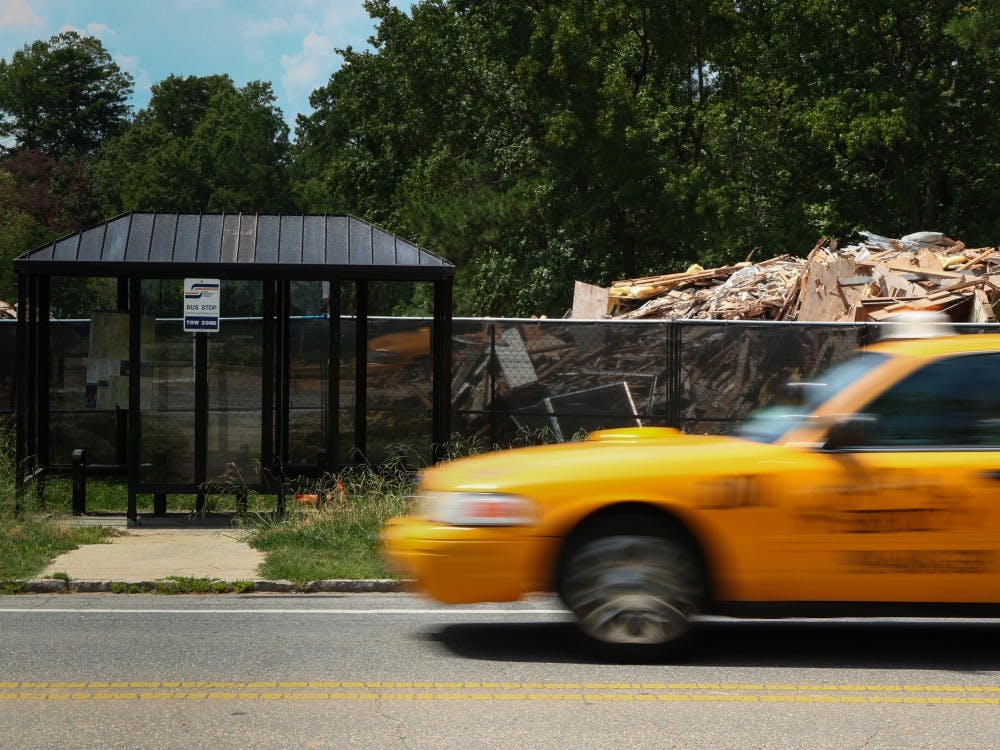With a history of residential living for students and Greek life, Central Campus is now an empty 60 acre plot of land. The University recognizes the area as valuable for development, but Central Campus’ future is still up in the air.
Central Campus origins
Previously owned by Erwin Mills, Duke purchased the land that would become Central Campus in 1964 and began constructing housing in 1972. Housing was apartment-style for its first decade and Central was exclusively for graduate students or students with families. Increased enrollment eventually opened up Central Campus for undergraduates.
In the 2010s, fraternities, sororities and other student organizations moved to Central Campus, giving the area “a sense of community.” At its peak, 1100 students lived there, and it was a place where students could socialize in a more regulated and safe manner.
This changed in 2019 when Central Campus apartments were demolished. Its apartments were struggling with mold, and administrators were ready to see it go.
“We’ve known from the day I arrived that Central Campus was done, that those buildings are ready to be retired,” said Larry Moneta, former vice president for student affairs, who came to Duke in 2001. “The money we put into them was just to keep them going until we could build something new.”
Former Dean of Students Sue Wasiolek told The Chronicle in 2017 that Duke had previously planned to turn Central into an entirely new campus with a residential focus, but also arts and theater buildings and space for classrooms and recreation.
Although students no longer could live in Central Campus, Duke expanded its housing options, first with purchasing Swift apartments in 2017, then with opening Hollows Quad in 2019.
However, some students still wonder if Central Campus will ever go back to being a liveable social hub.
Central Campus today
Students walking through what is left of Central Campus today are confronted with a gravel path, some leftover bricks from demolition and a parking lot. The University has considered development for the mostly untouched area, but no concrete plans have been set in place.
In 2018, the Central Campus Task Force was assembled by the Board of Trustees to come up with plans for Central Campus. The task force concluded that Central Campus is a "valuable asset," but that “the current financial commitments of the university do not allow for investment in development of the land at this time.”
Chris Simmons, interim vice president of public affairs and government relations, stated that the Central Campus Task Force convened for only one year and that “there are currently no plans on Central Campus development.”
“If a proposed plan is developed it would be vetted through an established capital project approval process, which includes committees made up of trustees, faculty, students and leadership of the university,” Simmons wrote.
Duke Student Government President Lana Gesinsky, a senior, said DSG has discussed uses of Central Campus in recent years. Gesinsky said that at her time at Duke, she’s only ever known Central Campus to be an empty space.
As DSG’s vice president of campus life last year, Gesinsky identified the lack of space on campus as a barrier to increased on-campus socializing. She mentioned that QuadEx and its Fun @ Duke initiative aim to promote this, but students don’t necessarily want to host parties in their dorm or on the quad. Central Campus presents itself as an ideal location to bring social life back to campus.
“[Central Campus] has the benefits of being on Duke’s campus and close to DUPD and close to the Duke Hospital, but it’s also far enough away that it feels kind of off campus,” she said.
Gesinsky said DSG has made suggestions to administrators about what to do with Central Campus, but she recognizes that it’s “a big decision.”
“There's a lack of space [at Duke] and Central Campus has the potential for so many things, whether that's academic or social or community space. I think [utilizing it for social reasons] is being considered as one of the potential uses of the space, and I think that administrators know that that's how I feel, but I'm not sure what they will eventually end up doing,” Gesinsky said.
Gesinsky said that if she “could do whatever she wanted with Central Campus tomorrow,” she would build an indoor, “almost barn-like” structure that could be rented out to people and student groups through SOFC, as well as a field for gatherings. There would also ideally be a student-run canteen with late-night food options, modeled off of those at other schools like Georgetown University.
Get The Chronicle straight to your inbox
Sign up for our weekly newsletter. Cancel at any time.
Gesinsky hopes DSG will set up a system to “formalize the student feedback and do an overall survey to the student body asking what they want” with Central Campus. Talking to students, Gesinsky has heard a wide variety of ideas, including expanding social spaces, creating more parking, maintaining a green space and even hosting a farmer’s market in the space.
But until a plan for development is named, whether it be a barn-like structure or a return to housing for graduate students, the future of Central Campus remains undecided.

Michael Ramos is a Trinity first-year and a staff reporter of The Chronicle's 118th volume.

